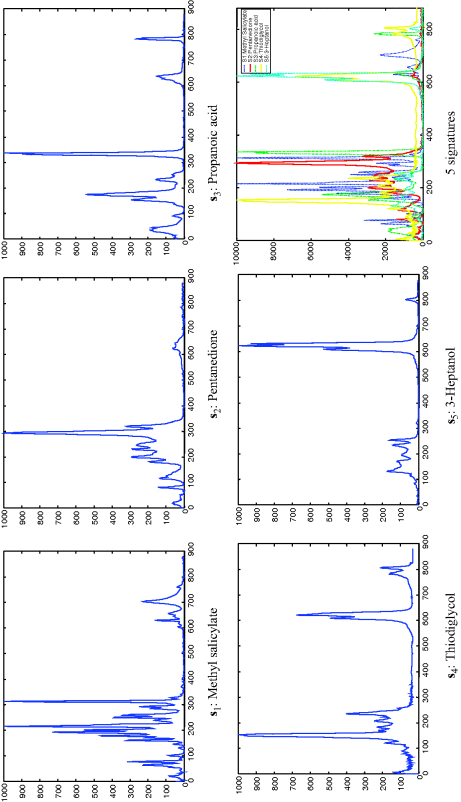26.4 NIST-GAS Data Experiments
The ability of MPCM-PSSC in progressive signature decomposition and progressive signature reconstruction are demonstrated in Figures 26.7 and 26.8 and Tables 26.1 and 26.2. This and the following sections further demonstrate versatility of MPCM-PSSC in other applications, spectral discrimination and identification. Two sets of data are used for experiments, laboratory data and real hyperspectral images. The laboratory data to be used in this section are gas spectral data shown in Figure 1.10 available online at National Institute of Standards Technology (NIST)'s website (webbook.nist.gov/chemistry) The data set has five 880-band chemical/biological spectral signatures shown in Figure 26.9, which are methyl salicylate, pentanedione, propanoic acid, thiodiglycol, thriethyl phosphate, and heptanol. Since the selected data set for experiments was empirical and all the experiments conducted for this data set could be also applied to other data sets.
Figure 26.9 Five spectral signatures of chemical data from NIST.

There are two reasons to select this data set. One is to demonstrate that MPCM-PSSC has an application in chemical/biological defense. The other is to demonstrate that MPCM-PSSC can be also used for ultraspectral signature characterization with thousands of spectral channels. There are also some other applications such as hyperspectral laboratory ...
Get Hyperspectral Data Processing: Algorithm Design and Analysis now with the O’Reilly learning platform.
O’Reilly members experience books, live events, courses curated by job role, and more from O’Reilly and nearly 200 top publishers.

